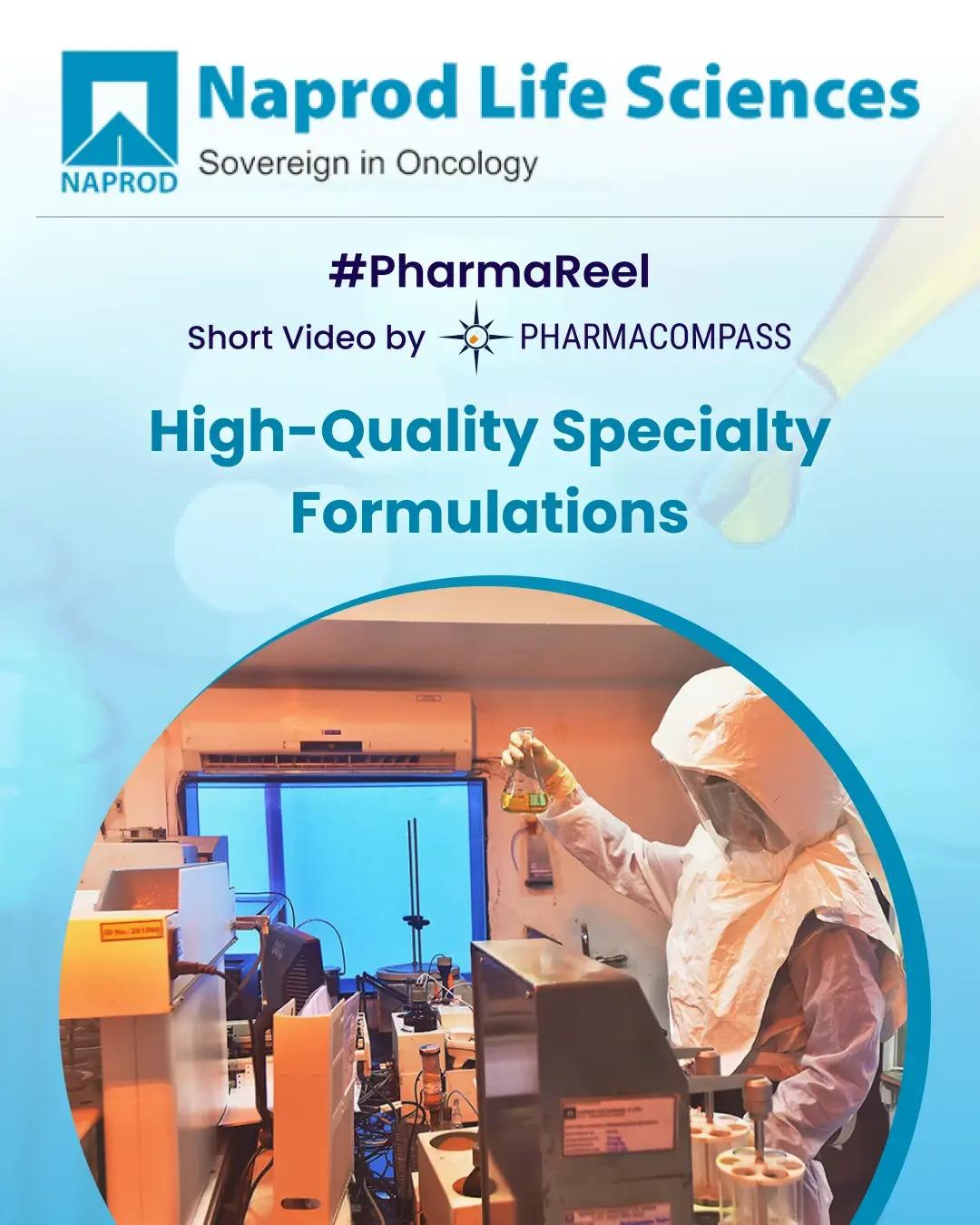
In the third last week of 2017, Phispers takes a look at the steps being taken by Teva’s new CEO Kare Schultz to pull the drugmaker out of doldrums. Former CEO of Teva, Jeremy Levin, on the other hand, cited five reasons behind the Israeli drugmaker’s downfall. Meanwhile, the Cancer Research Institute undertook a comprehensive study of the global clinical landscape for immunotherapies. Its report found significant immuno-oncology agents in development. The USFDA found a 14 percent reduction in the usage of antibiotics in food producing animals. Regulatory issued cropped up in Bangladesh and India. And Viagra finally faced competition from generics in the US.
As Teva’s new CEO plans 10K lay-offs, former CEO cites reasons behind its downfall
In November-end, Kare Schultz, the new CEO of the Israeli generic drug giant Teva Pharmaceutical Industries, shook its top order and booted out Michael Hayden, the chief scientific officer, Rob Koremans, head of global specialty medicines, and Dipankar Bhattacharjee, head of the global generic medicines group.
This month has brought more bad news for Teva’s employees. Schultz is considering cutting as many as 10,000 jobs, or nearly 15 percent of the total jobs at the beleaguered drug maker, in order to reduce expenses and pull it out of the US$ 35 billion debt burden it undertook when it decided to acquire Allergan Plc in 2015.
With these job cuts, Teva hopes to reduce its expenses by US$ 1.5 billion to US$ 2 billion over the next two years. “No final decision has been taken, and the targets may be modified, with a range of 5,000 to 10,000 jobs being discussed,” a Bloomberg news report quoted sources as saying.
Meanwhile, in an interview published in Globes (Israel’s financial newspaper), the former CEO of Teva — Jeremy Levin — has thrown more light on what may have caused the generic drug giant’s downfall. Levin, a non-Israeli, had quit as the CEO of Teva four years ago.
In the interview, Levin cited five reasons behind Teva’s downfall — the attack on Mylan, the acquisition of Allergan, the acquisition of Rimsa, the failure to build a significant innovative business and the failure to improve the generics business.
“The drop in prices in the generics market was also expected… When I got to Teva, everything was already clear — the expected consolidation of drug purchasers and the growing competition from India and China,” Levin said.
According to Levin, 90 percent of the prescriptions now written in the US are generics prescriptions. “But in order to maintain profit margins in such a competitive market, you have to renew yourself more quickly than the market,” Levin added.
Data-integrity
concerns uncovered in Bangladesh; FDA observations at two Indian firms
Bangladesh’s efforts to emerge a hub for generic drug product manufacturing suffered a serious setback this week as The Acme Laboratories Limited, based in Dhaka, was found to be non-compliant with Good Manufacturing Practices (GMP) by the United Kingdom’s Medicines and Healthcare Products Regulatory Agency (MHRA).
In this first inspection of the site, the inspectors uncovered “evidence of data integrity issues with GMP documents.” This brought up the question of the data “being used to support GMP decisions such as product release”. Acme is a manufacturer of Metronidazole tablets sold in the UK.
FDA observations at Glenmark and Shilpa Medicare in India: In the past week, the USFDA also posted its observations during recent inspections performed at Glenmark Pharmaceuticals and Shilpa Medicare in India.
Similar to the observations that resulted in Lupin receiving a warning letter recently, the FDA investigators expressed concerns over Glenmark and Shilpa’s failure to thoroughly review out-of-specification (OOS) investigations.
The inspection at Shlipa found that the initial out of specification (OOS) laboratory results were invalidated in favor of passing results without adequate investigation. Despite repetitive complaints from the market, all investigations concluded the complaint batch/product was acceptable.
During the inspection of Glenmark’s finished dosage manufacturing facility located at Baddi, India, the inspectors conclude that there were “no written procedures for production and process controls designed to assure that the drug products have identity, strength, quality and purity they purport or are represented to possess”.
The FDA investigators also found “quality documents shredded in the teeth and surrounding internal moving parts” of a shredder located in the Regulatory Affairs staff room at Glenmark. The documents (that were destroyed) included forms and chromatographs.
At Shilpa, the software in quality control used to conduct high performance liquid chromatography (HPLC) analysis of finished products for unknown impurities, was “configured to permit extensive use of multiple processing methods without scientific justification”.
During the analysis of impurities, analysts could change integration parameters for each sample run which included parameters such as inhibit integration, peak slice minimum area, sensitivity, baseline point peak group start and peak group end.
Observations similar to those at Glenmark and Shilpa sites have resulted in the FDA issuing warning letters to the concerned companies. However, it remains to be seen how well these companies address the concerns of the regulators.
FDA report finds
reduction in usage of antibiotics in food producing animals
All those awareness campaigns on how antibiotic use in food producing animals to promote growth and prevent illness fuels dangerous, antibiotic resistant “superbug” infections in human beings seems to be bearing fruit.
A recent report by the US Food and Drug Administration, titled ‘2016 Summary Report on Antimicrobials Sold or Distributed for Use in Food-Producing Animals’, shows that the sale and distribution of antibiotics approved for use in food-producing animals in the United States decreased by 10 percent from 2015 to 2016.
According to food and consumer health groups, this is the first such decline in year-on-year sales since the FDA began collecting data in 2009. For several years now, scientists have cautioned the regular use of antibiotics to promote growth and prevent illness in healthy farm animals.
A Reuters report said several American food companies, including McDonald’s and Tyson Foods, have stepped up efforts to curtail, and in some cases eliminate, antibiotics in their products.
Last month, the World Health Organization had urged farmers to completely stop using antibiotics to enhance growth of farm animals and to prevent disease in the healthy ones.
2,004
immunotherapies under development, says Cancer Research Institute study
Advances in immuno-oncology (IO) are changing the standard of care for patients with many types of cancer. The Cancer Research Institute (CRI), a leading non-profit organization, undertook an analysis of global IO clinical landscape (from pre-clinical development to regulatory approval). And in its report, CRI has quantified a significant number of IO agents in development. The institute is dedicated exclusively to IO, also known as cancer immunotherapy.
The report, titled, “Comprehensive Analysis of the Immuno-Oncology Landscape,” tracks 2,004 IO agents, of which 940 are already in clinical development.
According to Aiman Shalabi, CRI’s chief medical officer and director of the Anna-Maria Kellen Clinical Accelerator, the institute has for the first time “established a bird’s eye view of the entire immunotherapy landscape spanning the planet”.
Immunotherapies for the treatment of cancer are therapies that simulate the body’s immune system to fight the disease. The net result of this targeted approach is decreased toxicity and increased efficacy of immunotherapy.
“This is the first independent analysis that quantifies and confirms the level of excitement and potential of immuno-oncology,” Shalabi said.
There are 344 cancer vaccines in human studies, and 224 are clinical-stage cell therapies, the report said.
Five trends
that are impacting the US drug wholesaling industry
Adam J. Fein, President of Pembroke Consulting and CEO of Drug Channels Institute (DCI), has highlighted five significant industry trends affecting the US drug wholesaling industry. The trends had been published in an earlier article, which was an excerpt from DCI’s 2017–18 Economic Report on Pharmaceutical Wholesalers and Specialty Distributors.
“Many of these issues are headwinds for the wholesalers. The profit declines and negative trends partly explain why, when compared with last year’s report, the stocks of the largest public wholesalers are valued at a steeper discount to the overall stock market average,” said Fein.
1. Revenue growth will continue to be slow as brand-name drug inflation falls. Profits from brand-name drugs will remain under pressure. “Wholesalers will benefit from growth in demand for prescription pharmaceuticals and the corresponding increase in drug spending,” Fein said.
2. Wholesalers’ profits from generic drugs will remain below historical levels due to generic deflation and pharmacy negotiations.
“Over the past four years, prices of generic drugs have been highly volatile. Wholesalers initially profited from generic drug inflation from 2013 to 2015. However, generic deflation, combined with lower gross margins, has significantly reduced wholesalers’ total gross profits from generic drugs in 2016 and 2017,” Fein said.
3. Wholesalers will be forced to alter conventional pricing and contracting approaches to address profit challenges of specialty pharmacy drugs.
“Pharmacy industry revenues are shifting from traditional brand-name drugs to specialty drugs. We project that in 2021, specialty drugs will account for 42 percent of the pharmacy industry’s revenues,” Fein said.
4. Multifaceted partnerships will secure wholesalers' role with certain channels.
“Retail chains continue to shift away from self-warehousing in favor of direct-store deliveries from a wholesaler. As retailers eliminate self-warehousing capabilities, full-line wholesalers become virtually impossible to displace for traditional drugs dispensed by retail pharmacies,” Fein said.
5. Wholesalers will still be unlikely to profit from biosimilars over the next few years.
Regulatory uncertainty and legal challenges from manufacturers of biological reference products have delayed the launch of biosimilars. “We expect that even if these products launch, payers, PBMs (pharmacy benefit managers) and prescribers will control access and product selection,” he added.
Generic
versions of Viagra from Teva and Pfizer launched in the US
This week, Viagra was subjected to competition in the US from a generic from Teva Pharmaceuticals US.
Viagra is the brand name for Pfizer’s sildanefil, a drug for erectile dysfunction (ED) that hit the market in 1998. This popular drug, also known as the little blue pill, posted over US$ 1.5 billion in revenues in 2016.
Though Viagra’s patent will expire in April 2020, a deal negotiated four years ago allows Teva USA to start selling a generic version of Viagra in the US from December 11, 2017.
However, Pfizer is not taking things lying down. The pharma giant will counter Teva’s generic with its own generic version of Viagra, a white pill, manufactured by its subsidiary Greenstone LLC. Though the original little blue pill is priced at US$ 65, Greenstone’s copy is priced at US$ 30 to US$ 35 a pill.
The launch of Viagra had changed the American society in many ways. And the launch of Viagra generics too is likely to have an impact. Availability of Viagra had helped approximately 18 million men in the US, who suffered from ED, said a study published in the American Journal of Medicine.
The PharmaCompass Newsletter – Sign Up, Stay Ahead
Feedback, help us to improve. Click here
Image Credit : Phispers Week 50 by PharmaCompass is licensed under CC BY 2.0
“ The article is based on the information available in public and which the author believes to be true. The author is not disseminating any information, which the author believes or knows, is confidential or in conflict with the privacy of any person. The views expressed or information supplied through this article is mere opinion and observation of the author. The author does not intend to defame, insult or, cause loss or damage to anyone, in any manner, through this article.”






